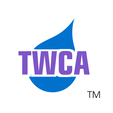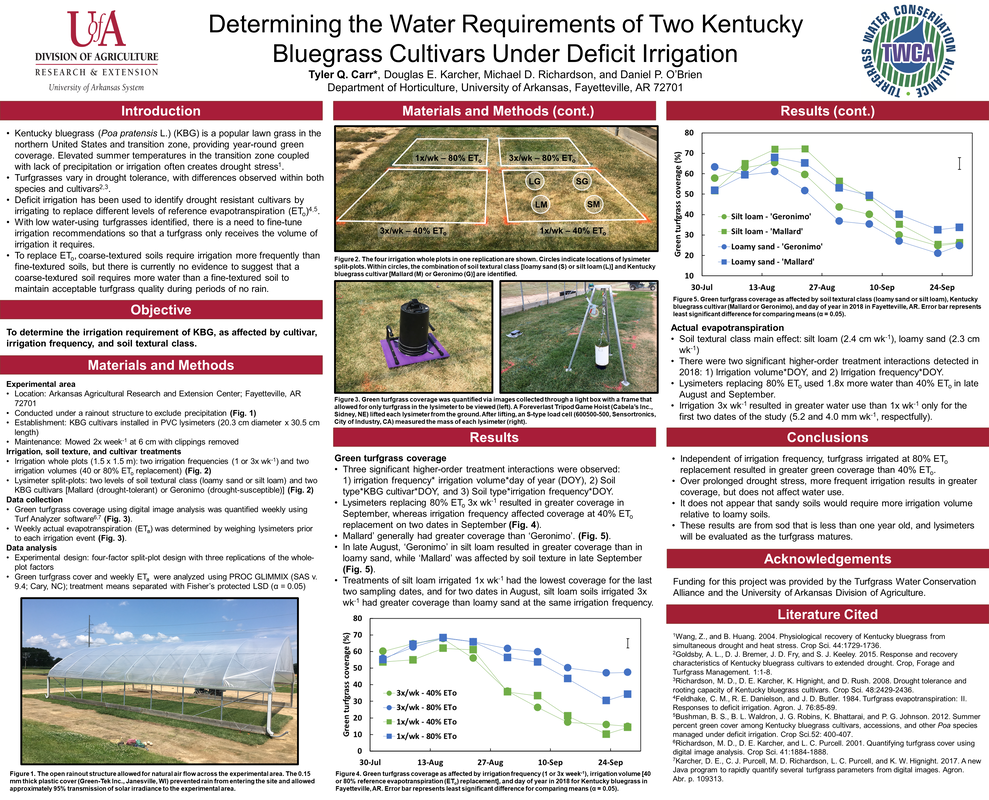|
Turfgrass Water Conservation Alliance (TWCA) created the Irrigation Calculator (based on this calculator from Pennington) to help end-users predict the runtimes of their irrigation systems. Simple. TWCA collaborated with a network of public and private researchers including Oregon State University, University of Washington, University of Arkansas, and NexGen Plant Science Center, on a series of multi-year inquiries to answer some basic questions about site specific conditions. The Irrigation Calculator is simple. Click the greenness of your grass (fun fact: during development we called this the "lush level"). Know the irrigation rate and weekly frequency. Remember where you live. It's true, there are some curveballs in there; not everyone knows if they have TWCA Qualified turfgrasses, but generally, pretty spoon and June. The calculator itself is an example of interdisciplinary cooperation on a public/private partnership resulting in an immediately useful tool. To make this tool, TWCA fist had to understand the interactions between soil texture and water demand for turfgrasses. This required a multi-year evaluation conducted by the University of Arkansas Division of Agriculture. The resulting work, Determining the Water Requirements of Two Kentucky Bluegrass Cultivars Under Deficit Irrigation, established for TWCA the idea that, volumetrically speaking, soil does not impact water demand. Soil texture, to the surprise of researchers, did not affect volumetric water requirements but did affect the applications. The program also needed to verify the hypothesized relationship between evapotranspirative (ET) replacement (percentage of water lost to the combined properties of evaporation and transpiration that is replaced) and the percent green cover. This concept, pioneered by the Hignights, Kenneth and Debra of NexGen Plant Science Center, was later formalized by the research team in the paper Kentucky Bluegrass Performance under Chronic Drought Stress. This work went on to serve as the basis for the aforementioned "lush levels". Separately, it also underpins the Cultivar Plant Factor relationship. The program was also contending with integrating different data types into the same mapping tool. At the conclusion of the tool, chief GIS developer of the project Bo Zhao said it was an interesting and novel challenge in data integration and modeling. With the modeling and research complete the beta testing revealed some unexpected flaws in the modelling. In the initial testing, the values were four times higher than initially predicted. After reviewing the root was found in a missing conversion from monthly to weekly ET. The Irrigation Calculator allows homeowners to accurately estimates the minimum run times for survival of their landscapes based on green cover, ET, rainfall, and irrigation levels. The calculator also accounts for the genetic differences between TWCA Qualified turf, and cultivars with unverifiable drought claims. As a member supported organization TWCA relies on membership dollars to provide innovative programs like this one. Please support TWCA in our shared mission to conserve water and protect the ecological benefits of turfgrass in the managed environment.
Thank you for your support.
0 Comments
Leave a Reply. |
Program AdministratorJack Karlin is the Program Administrator for TWCA. His interest is in using policy and the built environment to create livable and sustainable communities. Archives
April 2024
Categories
All
|
|
|
Turfgrass Water Conservation Alliance
|
Copyright © 2022 Turfgrass Water Conservation Alliance. All rights reserved.



